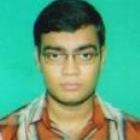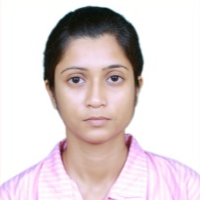International Journal of Intelligent Systems and Applications (IJISA)
IJISA Vol. 4, No. 12, 8 Nov. 2012
Cover page and Table of Contents: PDF (size: 604KB)
Prediction of Adsorption of Cadmium by Hematite Using Fuzzy C-Means Clustering Technique
Full Text (PDF, 604KB), PP.32-40
Views: 0 Downloads: 0
Author(s)
Index Terms
Clustering, Fuzzy C-means Clustering, Random data set, Cluster center, Membership function, Time series prediction, Error analysis
Abstract
Clustering is partitioning of data set into subsets (clusters), so that the data in each subset share some common trait. In this paper, an algorithm has been proposed based on Fuzzy C-means clustering technique for prediction of adsorption of cadmium by hematite. The original data elements have been used for clustering the random data set. The random data have been generated within the minimum and maximum value of test data. The proposed algorithm has been applied on random dataset considering the original data set as initial cluster center. A threshold value has been taken to make the boundary around the clustering center. Finally, after execution of algorithm, modified cluster centers have been computed based on each initial cluster center. The modified cluster centers have been treated as predicted data set. The algorithm has been tested in prediction of adsorption of cadmium by hematite. The error has been calculated between the original data and predicted data. It has been observed that the proposed algorithm has given better result than the previous applied methods.
Cite This Paper
Satyendra Nath Mandal, Suhit Sinha, Saptarisha Chatterjee, Sankha Subhra Mullick, Sriparna Das, "Prediction of Adsorption of Cadmium by Hematite Using Fuzzy C-Means Clustering Technique", International Journal of Intelligent Systems and Applications(IJISA), vol.4, no.12, pp.32-40, 2012. DOI:10.5815/ijisa.2012.12.05
Reference
[1]S. Miyamoto et al.: “Algorithms for Fuzzy Clustering”, STUDFUZZ 229, pp. 1–7, 2008. springerlink.com
[2]Song Q, Chissom B.S, “Forecasting enrollments with fuzzy time Series part I. J Fuzzy Sets Syst 54:pp1–9,1993
[3]A.K. Jain, Michigan State University; M.N. MURTY, Indian Institute of Science AND P.J. FLYNN, “Data Clustering: A Review”, The Ohio State University; ACM Computing Surveys, Vol. 31, No. 3, September ,1999
[4]Zadeh L.A” Fuzzy sets Inform. Control”,8(3):pp338–353,1965.
[5]Hisao Ishibuchi, Ken Nozaki, Hideo Tanaka, “Efficient fuzzy partition of pattern space for classification problems”, Elsevier Volume 59 issue 3, pages 295-304, 10th November 1993
[6]Watada J ,”Fuzzy time series analysis and forecasting of sales volume”, 1992.
[7]Song Q, Chissom B.S, “Fuzzy time series and its models”. Fuzzy Sets Syst 54:pp269–277, 1993
[8]Song Q, Chissom B.S,” Forecasting enrollments with fuzzy time series”—part II. 62:pp1–8, 1994
[9]Sullivan, J. H. and Woodall, W. H. , "A Comparison of Fuzzy Forecasting and Markov Modeling," Fuzzy Sets and Systems, 64(3), 279-293,1994.
[10]Kim, M. J., Min, S. H., & Han, I. G. , “An evolutionary approach to the combination of multiple classifiers to predict a stock price index” Expert Systems with Applications, 31, 241–247,2006
[11]Chang P.T, “Fuzzy seasonality forecasting”, Fuzzy Sets and Systems 90(1):pp1–10.
[12]Chang P.T, Lee ES, Konz S.A., ”Applying fuzzy linear regression to VDT legibility”, Fuzzy Sets and Systems 80(2): pp197–204,1996
[13]Chang SC, “The TFT–LCD industry in Taiwan: competitive advantages and future developments”, Technology in Society 27(2): pp199–215, 2005
[14]Tseng FM, Tzeng GH, Yu HC, Yuan Benjamin JC,” Fuzzy ARIMA model for forecasting the foreign exchange market”. Fuzzy Sets and Systems 118(1):pp9–19,2001.
[15]Jeng-Ren Hwang, Shyi-Ming Chen, Chia-Hoang Lee,”Handling forecasting problems using fuzzy time series”,Elsevier volume 100 issues 1-3, pages 217-228, 16th November 1998.
[16]Castillo O, Melin P.A, “New-fractal approach for forecasting financial and economic time series” J IEEE, pp 929–934
[17]Serafin Stefano, Bertò Alessio, Zardi Dino ,”Application Of Cluster Analysis Techniques To The Verification Of Quantitative Precipitation Forecasts”,pp395-398, http://www.map.meteoswiss.ch/map-doc/icam2005/pdf/poster-sesion-c/C18.pdf, date of access 15.04.2012.
[18]Song Q, Chissom B.S,‖ Forecasting enrollments with fuzzy time series‖—part II. 62:pp1–8, 1994
[19]Enrique H. Ruspini “A new approach to clustering”, Space Biology Laboratory, University of California, Los Angeles, USA, July 1969.
[20]J. C. Dunn (1973): "A Fuzzy Relative of the ISODATA Process and Its Use in Detecting Compact Well-Separated Clusters", Journal of Cybernetics 3: 32-57.
[21]J. C. Bezdek (1981): "Pattern Recognition with Fuzzy Objective Function Algorithms", Plenum Press, New York.
[22]T Singh, V Singh and S Sinha,” Prediction of Cadmium Removal Using an Artificial Neural Network and a Neuro-Fuzzy Technique”, Mine Water and the Environment, Volume 25,Number4,pp214-219,20




